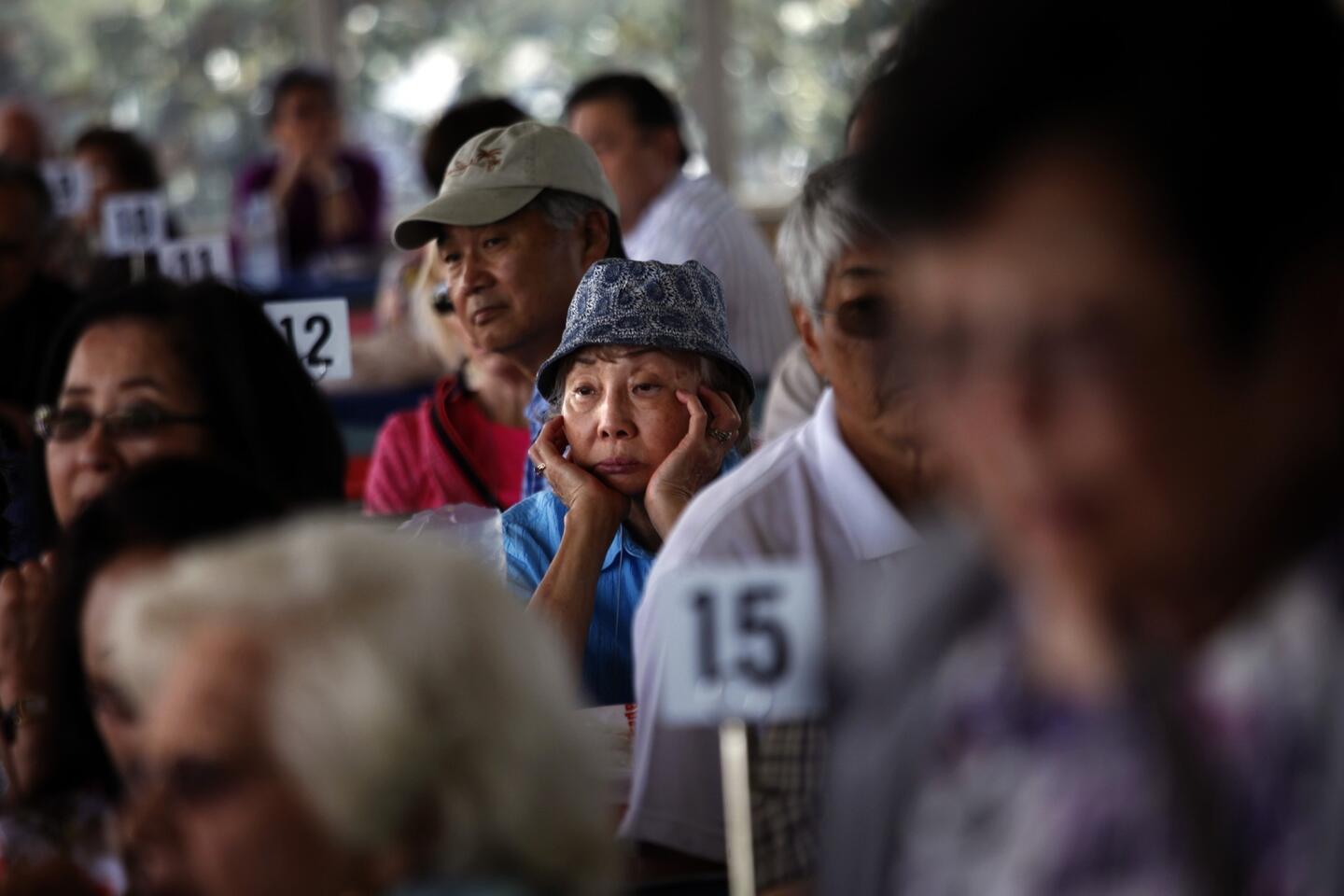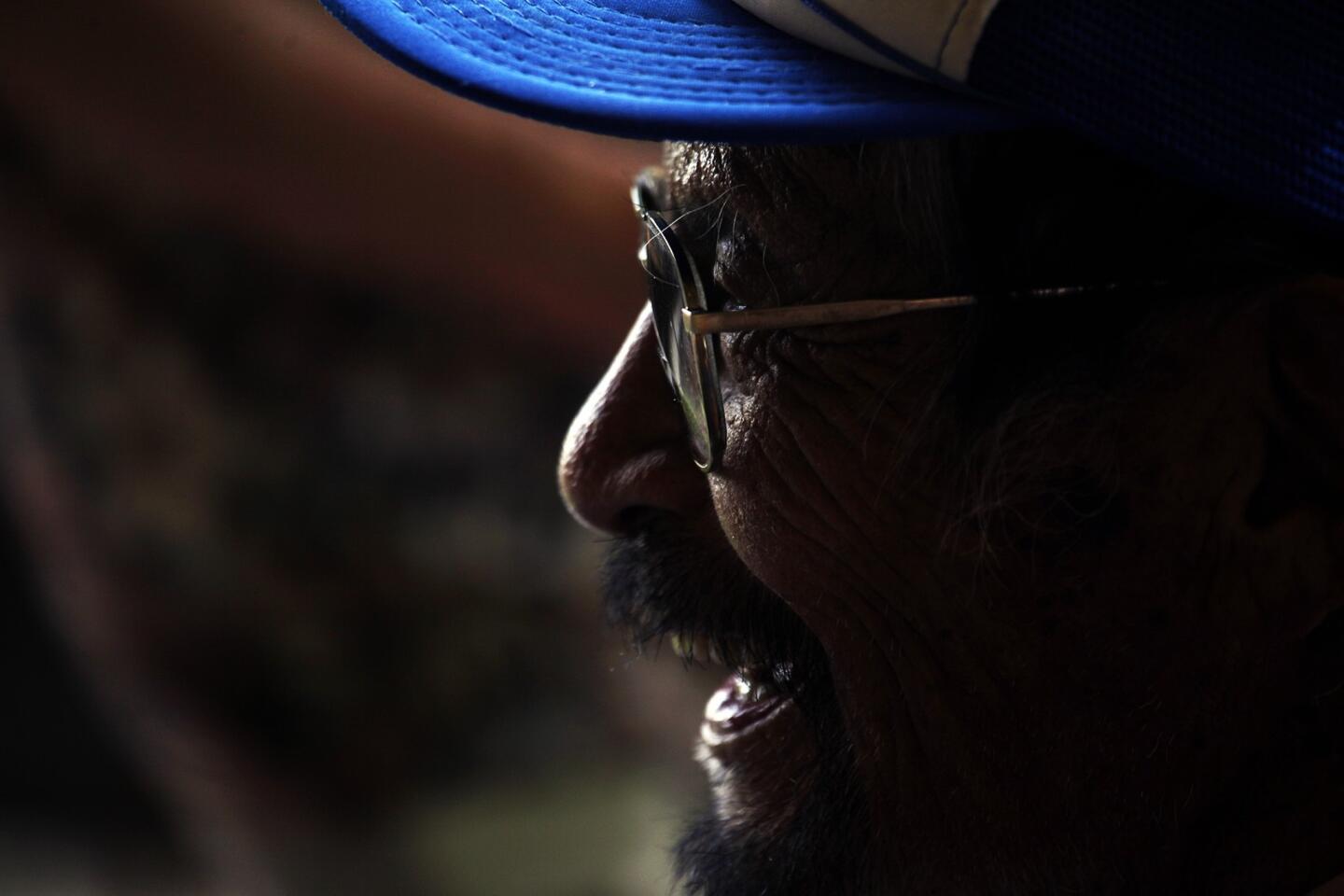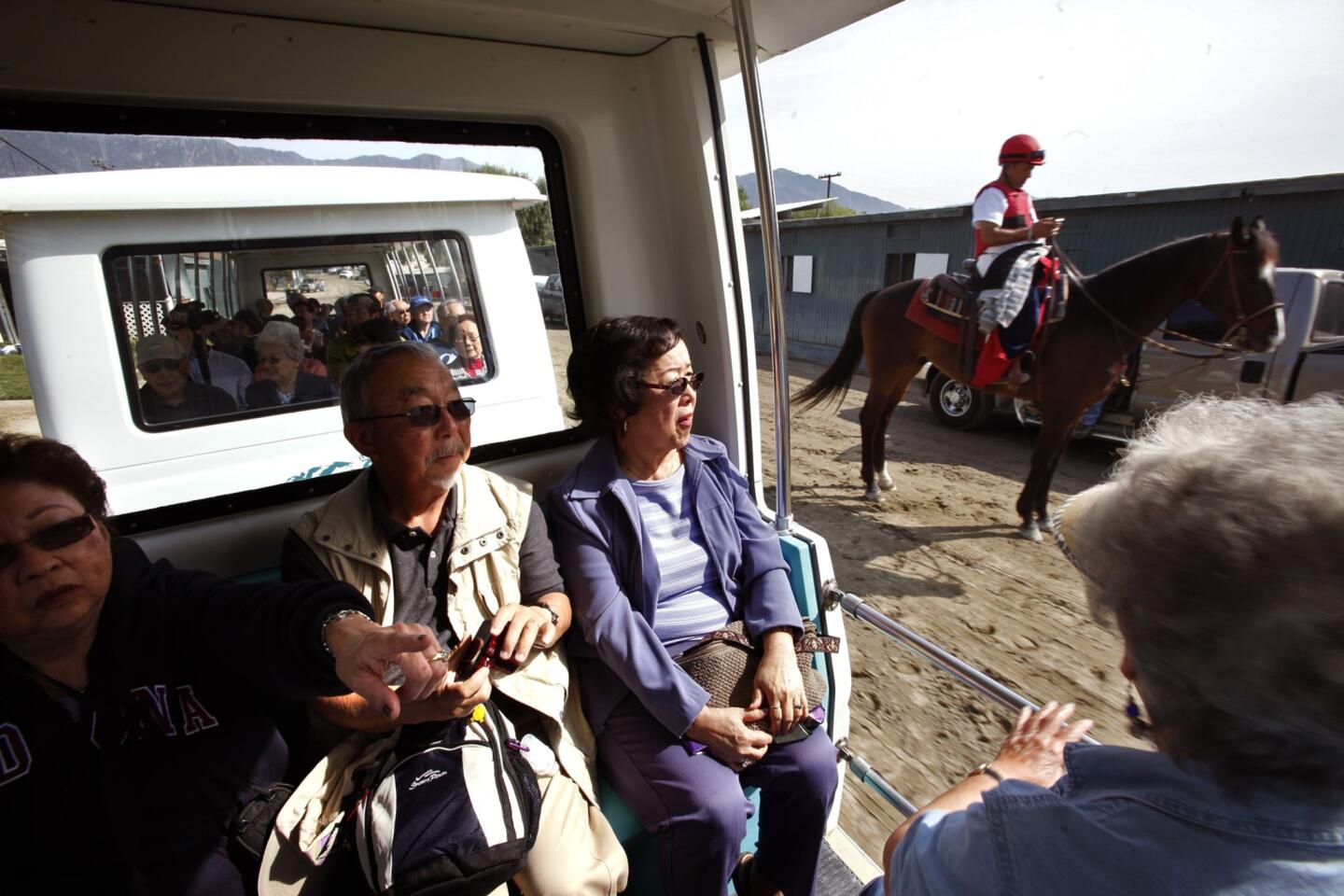For Japanese Americans, a backtrack to a sad past at Santa Anita
- Share via
As thoroughbreds were groomed and prepped for the day’s races, a group of elderly Japanese Americans circled the stables of Santa Anita in a tram.
For six months in 1942, they lived here, in the same stalls where horses had slept, before being shipped to internment camps in isolated areas of the country. Back then, arriving adults mourned the loss of homes and businesses, while children explored the grounds, making new friends.
In the barns, a thin layer of asphalt was all that separated families from layers of manure. Beds were mats stuffed with straw.
On Saturday, the pungent odors brought back 70-year-old memories of the government’s World War II detention of residents of Japanese descent.
“Remember how smelly the stables were?” asked June Aochi Berk, who was 10 years old at the time, and now served as tour guide during a reunion of internees and their relatives who told stories of spartan times at the track. “My friend couldn’t eat because the smell of the stables made her sick.”
Berk pointed out where the showers, the mess halls and the barns that housed families stood. Most of the former internees, now in their 80s and 90s, could not recall precisely where they stayed. The place looked different, they said, with nicer buildings and landscaping where there was dirt.
“I was pretty young, and I didn’t know why we were here, except that we were evacuating from the West Coast,” said Shiro Nagaoka, 89, who was 15 when he was forced to leave his Torrance home. “We were enjoying ourselves too much, maybe. We were pretty free to do what we wanted.”
Nearly 400 former internees and family members attended the event honoring George “Horse” Yoshinaga, a columnist for a Los Angeles Japanese newspaper, Rafu Shimpo, who began organizing reunions years ago and led the drive for a monument commemorating the site’s history as an internment center.
“I got my name here,” he joked to the crowd, referring to his nickname. “They say it’s because I ran on the track, but it’s because I smell like a horse.”
Santa Anita was the largest of 17 “assembly centers” in the western U.S., including one in Pomona, housing Japanese Americans removed from their homes during the war with Japan. The Santa Anita detainees, who numbered nearly 19,000, were mostly from Southern California, with a few brought from San Francisco and Santa Clara. Some were housed in temporary barracks; others were squeezed into the horse stalls.
Internees recalled Saturday that armed guards patrolled the camp and searchlights scanned for escapees. Some were paid $8 a month to make camouflage nets. They also shared fonder memories of softball games, sumo wrestling matches and new friendships.
Amy Hashimoto graduated from high school at the track. Six of her classmates from Excelsior High in Norwalk were also at the camp, and their principal came to present their diplomas, she recalled.
She said her family had to sell a hog farm quickly, at a low price, when the order to evacuate Japanese residents was issued.
“We were young enough, and we made lots of friends,” said Hashimoto, 89, who went from Santa Anita to an internment camp in Rohwer, Ark. “Our Issei [first-generation immigrant] parents — it was the hardest on them. They were the ones who lost the most.”
Min Tonai was 13 when he arrived at Santa Anita. When he saw the barbed wire and guard towers, he said, he felt he was entering a prison camp. His father had owned a dozen produce stands before the war but afterward trimmed vegetables at someone else’s stand, he said.
“They were not trying to protect us. They were making sure we didn’t get out,” said Tonai, 85.
Ruth Takahashi Voorheis said she cried once during her years of internment: when she arrived at Santa Anita and saw the horse stall she was to share with her mother, brother and uncle.
“It was a communal bath, communal eating. There was a line for everything,” said Voorheis, 91, who later was moved to a camp in Arizona.
Saturday’s reunion also gave younger family members a chance to understand what their parents and grandparents experienced.
“Even though it’s modern now, when you smell that smell, you can imagine what it could have been like,” said Voorheis’ son, Don.
More to Read
Sign up for Essential California
The most important California stories and recommendations in your inbox every morning.
You may occasionally receive promotional content from the Los Angeles Times.















